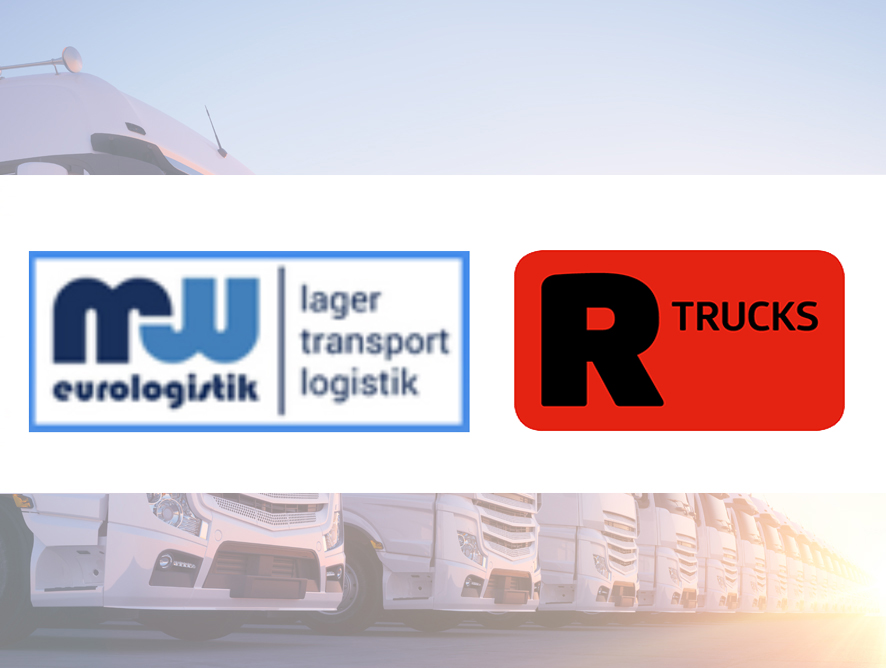News

TACHofresh®
Press releases
04/03/19
MW Eurologistik monitors subcontractors via telematics software
MW Eurologistik charters out its trucks to customers throughout Germany. However, the company hardly ever gets to see the vehicles – and yet thanks to digitalised processes, operations are clear and straightforward. For managing director Mario Westergerling, reading out the data via remote download and permanent monitoring are part of everyday life. He thus benefits from digitization. His customers, on the other hand, have shown little interest in the data to date.
One look at the screen is enough and Mario Westergerling knows exactly where his trucks are. The 20 mostly green flashing dots on the map of Germany of the computer give information about it. The managing director of MW Eurologistik hardly sees his vehicles and drivers except on the screen. They are chartered out as subcontractors to regular customers.
MW Eurologistik works nationally. The vehicles load industrial goods, food and general cargo. Westergerling’s customers include Kraftverkehr Nagel. “We serve four stations in Hamburg, Magdeburg, Dresden and Kabelsketal.” The customers freight and dispatch the vehicles from Monday to Friday and send the orders to the drivers. At the end of the week, Westergerling prepares the weekly accounts for each customer. He then evaluates the route plans and issues the invoice for each customer. “My administrative effort is low,” says the managing director. “My main focus is on ensuring that drivers and fleet are available.”
Westergerling has been active in the logistics industry for 20 years. Until just over two and a half years ago, he worked as a consultant and interim manager. In October 2016, the 54-year-old decided to become active as a transport logistics entrepreneur himself and to invest the knowledge he had acquired worldwide in his own transport company.
“A company needs a certain number of vehicles in order to operate profitably. But I set myself an upper limit because I didn’t want to get past the point where I can no longer manage the operative business alone.” In the beginning, the trained forwarding agent relied on rental vehicles to remain flexible. At the end of 2016 he started with two trucks of the landlord R-Trucks. “I wanted to expand in stages – depending on capacity utilization and the number of customers and drivers,” says Westergerling. In the summer of 2017 he already owned five R trucks. He currently has six rented trucks in his fleet. Just a few months after the start of business, Westergerling also began to build up his own fleet of 14 vehicles. “I am so very flexible over a manageable period of time. So I can always adapt well to the development of drivers and customers”. He owns the leasing vehicles for three years. In case of doubt, he can return the rented trucks after twelve months.
Managing drivers from a distance
The main problem for Westergerling from the beginning was the readout of the mass memory data of the digital tachograph and the driver card. “Because the vehicles are driven in my company by persons and are on the road throughout Germany, I do not see 80 percent of my employees and vehicles. In addition, his office in a residential area on the outskirts of Berlin does not allow the data to be read out on site. “I didn’t want to expect anyone to have to go anywhere every 28 days to read the data,” emphasizes the boss. Therefore, one of the prerequisites for the equipment of the rental vehicles was that they had a telematics unit for reading the data via remote download. “In addition, I wanted to trace all relevant information from the trucks – for example whether the ignition is on, how fast they drive, where they are, when the drivers take their breaks and how much remaining driving time is available.
Lack of interest
Westergerling wanted a comprehensive overview from remote. The renatl company R-Trucks was able to help with the telematics system R-Tacho. The system was so convincing that Westergerling also had it installed in his own leasing vehicles. “So I can see all my vehicles at a glance and don’t have to resort to a second telematics system,” says the logistics entrepreneur. In theory, he could also set up guest access for his customers so that they could see the vehicles that he himself uses as a subcontractor. This is clearly an added value, says Westergerling. But nobody has asked him that yet.
The digitalisation of the vehicles also helps the rental company. “The telematics system provides us with important information from the truck such as the current mileage and the current location,” explains Thomas Pfisterer, Director Sales & Operations at R-Trucks. “For these details alone, it was worth installing the TACHOfresh telematics system,” explains Pfisterer.
The driver management processes are largely automated. Westergerling only needs the inserted company card in his office to call up the speedometer and driver data from a distance. The driver card is in the vehicle. Westergerling only checks every 28 days whether the data has been downloaded automatically via remote download. A status display in the system shows him whether the download was successful and when the next one is due.
For Westergerling, retrieving remaining driving, working and rest times is also an important feature of the telematics software. “I can thus offer customers a certain added value and inform them about the current location and the expected time of arrival. Westergerling also has a good overview of the applicability of his drivers. “When he’s taking a break and resting, I don’t have to call him first and I might wake him up,” explains the boss.
In Berlin, the dots continue to blink diligently on the screen. Even today everything is in the green area again. (rok)
Source: DVZ-Deutsche Verkehrs-Zeitung